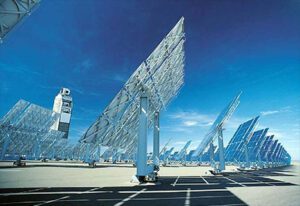Fuel Cell Electric Car Drives 2,383 Kilometres with Zero Emissions
Two Norwegian eco-pioneers set a new record when they filled a car with “compressed” electricity from Vattenfall’s hydrogen station in Hamburg and drove to Berlin, proving that emission-free driving is possible not just in city traffic but also over longer distances.
Arnt-Gøran Hartvig and Marius Bornstein drove 2,383 kilometres non-stop back and forth between Vattenfall’s hydrogen station in HafenCity, Hamburg, and a similar station in Berlin – a distance of 300 kilometres – as many times as possible in 24 hours.
“By filling the world’s first series-produced hydrogen car from a state-of-the-art hydrogen station and then driving it in ordinary weekday traffic for several hours, we have proved that today’s technology is fully fit for purpose,” says Hartvig. The two independent non-profit eco-pioneers also drove a record distance for a hydrogen-powered car on a single tank, and have even driven a hydrogen car from Oslo to Monaco, refuelling only at hydrogen stations.
Only water in the exhaust
A fuel-cell powered car is an electric vehicle using an ingenious technology which acts as a range extender. A fuel cell basically works like a battery that supplies electricity to the car’s electric motor. The difference is that it runs on a fuel, namely hydrogen: operating as the vehicle’s own little power plant, it converts hydrogen into electricity.
The only exhaust produced by a hydrogen-powered fuel cell is water.
Filling stations in Germany
Germany has a handful of hydrogen filling stations, and Hartwig and Bornstein have shown that it is possible to cover distances between larger cities with a state-of-the-art fuel-cell powered car.
“The car has a range of 450 kilometres, and it takes five minutes to fill it up at the Vattenfall station. Whereas it used to take hours to refuel hydrogen, today’s high pressure technique reduces the time significantly,” says Hartvig.
The Vattenfall hydrogen station in Hamburg was set up as a pilot project and was designed to serve the city’s fleet of hydrogen buses. The hydrogen is produced by using electricity to break up water into hydrogen and oxygen. The electricity comes from wind turbines which normally feed directly into the grid. But when supply exceeds demand, the surplus electricity is used for the electrolysis unit in the gas station to produce hydrogen.
“Hydrogen production is a good way of storing excess renewable electricity,” says Claus Wattendrup, Managing Director of Vattenfall Europe Innovation GmbH.
![]() Tags: Europe, Germany, Sweden, Vattenfall
Tags: Europe, Germany, Sweden, Vattenfall

